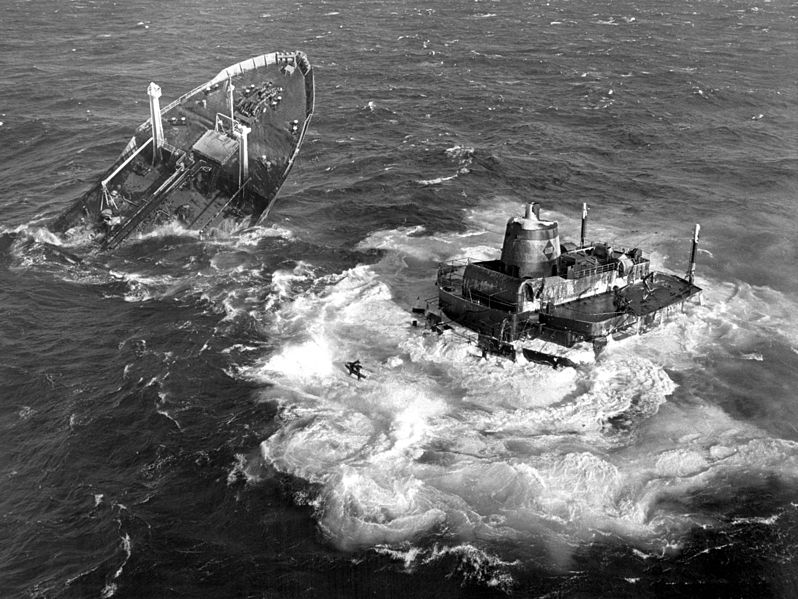MV Argo Merchant was a Liberian-flagged oil tanker built by Howaldtswerke in Hamburg, Germany in 1953, most noted for running aground and subsequent sinking southeast of Nantucket Island, Massachusetts, causing one of the largest marine oil spills in history. Throughout the vessel’s troubled past, she was involved in more than a dozen major shipping incidents including two other groundings; once in Indonesia while named Permina Samudra III, and again in Sicily while named Vari; and a collision in Japan.
Because of her checkered career and sinking, Argo Merchant was featured in the “worst ship” category in the 1979 publication, The Book of Heroic Failures.
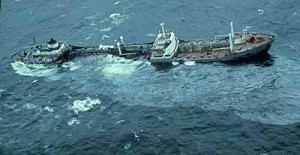
In December 1976, Argo Merchant loaded with 7,700,000 US gallons (29,000,000 l) of No. 6 fuel oil at Puerto La Cruz, Venezuela, was sailing for Boston under Captain Georgios Papadopoulos. It was later established that the ship carried two unqualified crew as helmsmen, a broken gyrocompass, inadequate charts, and an inaccurate radio direction finder.
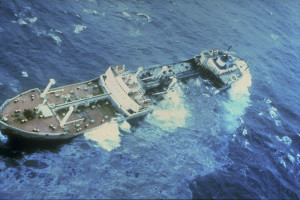
At six p.m. on the 15th December in high winds and 3 m (9.8 ft) seas, the tanker ran aground on Middle Rip Shoal about 29 nautical miles (54 km; 33 mi) southeast of Nantucket and more than 24 nmi (44 km; 28 mi) off her intended course. The thirty-eight members of the crew were evacuated, but the shallow waters and weather conditions made it impossible to offload the oil or salvage the ship.
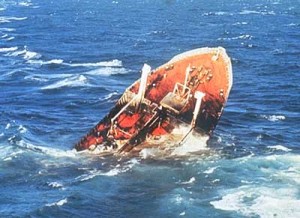
Despite attempts to refloat the tanker, it began to leak oil and, at 08:35 on December 21st, broke in half after a battering by gale force winds. By the next day, after the ship had broken again, most of the oil it carried was drifting at the mercy of winds and currents. The bow section, which still had some buoyancy and was thought to contain some remaining cargo, started drifting away from the other two pieces of wreckage. Despite attempts by the U.S. Coast Guard to remove the buoyancy by holing the floatation compartments on December 31st, the bow section drifted southeast into deeper water under the influence of the severe currents in the area. On February 8th, 1977, the bow section was relocated 1 mile to the southeast and was found to be empty of oil.
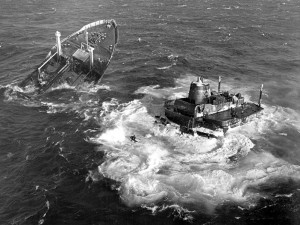
Argo Merchant emptied its entire cargo of fuel oil, enough to heat 18,000 homes for a year. Fortunately, northwesterly winds blew the 60 by 100 NMI (110 by 190 km; 69 by 115 mi) oil slick offshore, and coastal fisheries and beaches were spared the worst.
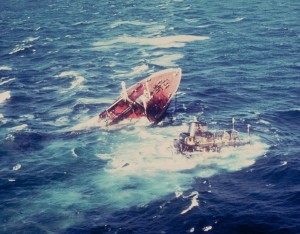
The Argo Merchant’s distress call (international code “XXX” on 500kHz international calling and distress radio frequency) was responded to by USCG Communication Station (COMMSTA) Portsmouth (NMN).
What started as another tanker going aground ended up as one of the largest oil spills in U.S. history.
